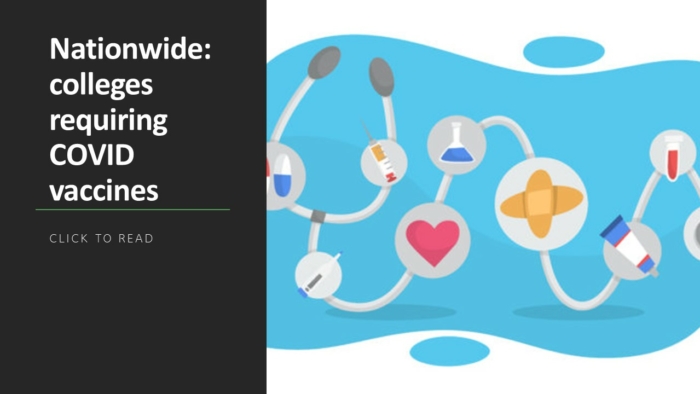A comprehensive study conducted by four universities during the first month of the fall semester shows that students overwhelmingly approved of mask mandates but were split on vaccine requirements imposed by their institutions.
More than 21,000 individuals took part in the COVID States Project done by Northeastern, Harvard, Rutgers and Northwestern, highlighting their adherence to vaccination policies, their attitudes on mitigation strategies and universities’ response to the pandemic.
Nearly 75% said they had gotten at least one dose of the vaccine, a number that meshes with reporting from many institutions that student percentages are often higher than surrounding communities throughout the U.S. Much of that can be attributed to vaccine mandates, with more than 1,000 institutions nationwide imposing the requirement.
But a shocking 26% of respondents of those surveyed said they were unsure if their university had a vaccine requirement for students, while a third did not know whether faculty were required to have doses. Around 18% also were uncertain of mask policies, though many institutions may be confusing them with changing guidance – outdoors vs. indoors, for example.
Related: State-by-state look at colleges requiring COVID-19 vaccines
“This suggests schools are not doing a great job communicating their policies and ensuring they are understood,” James Druckman, professor of political science and associate director of the Institute for Policy Research at Northwestern, told the university’s news service.
Another faction of students seems against mandates for political or other reasons.
“The contentiousness of COVID-19 vaccine mandates on university campuses echoes the broader societal divide on this issue,” study authors wrote. “Many campuses have struggled with COVID-19 vaccine policy implementation and exemption requests, with some students even withdrawing in protest of the vaccine mandates.”
Breaking down the data
There were several notable takeaways from the report, done from Aug. 27-Sept. 27 and part of a series conducted by researchers since the start of the pandemic.
The first is the sizable demographic division among students on getting vaccinated. While nearly 90% of all Asian students have gotten at least one dose of the vaccine, only 56% of Black students report they have. Hispanic (79%), White (75%) and all other groups come in above two-thirds vaccinated.
As for their thoughts on their university’s response to vaccinations and other strategies:
- A little more than half of all individuals overall approved of the way university administrators have handled COVID-19 on campus. That includes those who were given hybrid and fully online course options. However, the majority of those who were required to attend classes in person did not approve of their decision-making.
- Private universities garnered a little more support (60%) from students than public universities (54%) on the handling of COVID vaccines on campus.
- Students from universities with vaccine mandates overwhelmingly approved (80%) of the requirement. Less than 50% of those attending institutions that had no mask (42%) or vaccine (47%) policy approved of administration decision-making on COVID-19.
“School administrations that had mandated mask-wearing and vaccines for students, staff, and faculty had a higher student approval rating than universities without such policies,” authors said. “This could signify student concern about transmissibility of COVID-19 on campus.”
Approval of administration does cut across political lines, especially when it comes to vaccines. While 60% of Democrat-leaning students approve of the handling of COVID mandates from administration, Republicans and Independents are not as thrilled with the response (42%). Those who are vaccinated overwhelmingly support vaccine mandates, while the unvaccinated sit at just 33%.
However, when it comes to mask mandates imposed by governments, the unvaccinated number jumps to 59%. Those who are vaccinated (90%) strongly support them. So, there may be more opportunities for colleges and universities to impose mask requirements when needed. However, as Druckman points out, institutions must be clearer in messaging – and do so often across multiple channels – to reach all students.



